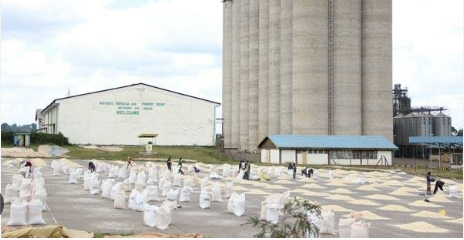
National average price spreads for Maize
Across select East African countries (USD/metric ton)
Timothy Njagi, a food security expert, says transitioning from bags to kilos in pricing would help streamline charges like cess.
In Summary

Audio By Vocalize

Food security experts have raised concerns over a proposal by the Senate to standardise maize packaging to 50kg bags.
They warned the move could disadvantage farmers if pricing continues to be tied to packaging units rather than weight.
The debate follows a motion by Nandi Senator Samson Cherargei, who urged the National Cereals and Produce Board (NCPB) to enforce maize packaging in 50kg bags instead of the current 90kg standard. The senator argued that the use of 90kg bags contravenes legal guidelines and puts small-scale farmers at a disadvantage when selling to the state agency.
According to the Crops (Food Crops) Regulations, 2019, Section 36(3), food crops such as maize, barley, finger millet, pearl millet, rice, sorghum, wheat and pasta wheat should be packaged in units not exceeding 50kg.
Despite this, the Senate said NCPB continues to use 90kg bags for its strategic grain reserves and purchases.
The regulations notes that traders, farmers, processors and aggregators must comply with the 50kg packaging limit when transporting or marketing these crops.
It states that larger bags of 90kg or 100kg are illegal under this regulation for the specified crops, and that enforcement bodies, such as the Agriculture and Food Authority (AFA) and NCPB, are expected to uphold the standard during crop procurement, storage and movement.
Timothy Njagi, a food security expert, warned that enforcing the 50kg bag requirement at the farm level without addressing how pricing is done would negatively impact farmers.
“Before we talk about packaging, we must first address how pricing is determined. Currently, most farm produce like maize, potatoes, and tomatoes are sold by bags, crates, or cartons and not by weight,” he said.
Njagi cited the example of tomatoes, where a crate bought in Kajiado is not priced the same as one from Kirinyaga, showing that pricing often varies based on volume or packaging, not standardised weight.
“We need to decide whether pricing is volume-based or weight-based. Only then can we enforce packaging standards effectively,” he said.
Njagi said transitioning from bags to kilos in pricing would also help streamline charges like cess, which are often applied per truckload rather than per weight.
He said unless the entire value chain, from farm to market, is aligned with the 50kg packaging regulation, the policy could end up creating market inequalities.
“For instance, when the 110kg potato bag was banned in favour of the 50kg bag, farmers still reverted to the larger bag because the market penalised them for using the smaller one,” Njagi said.
He stressed that any packaging regulation must be applied uniformly across all stakeholders including farmers, traders, processors and consumers, for it to be effective.
“If you enforce 50kg bags but still allow pricing per bag rather than per kilo, you create winners and losers in the system,” he said.
Instant analysis
Section 36(3) of the Crops (Food Crops) Regulations, 2019, provides specific guidelines on the packaging requirements for key food crops in Kenya. It mandates that certain staple crops including maize, barley, finger millet, pearl millet, rice, sorghum, wheat, and pasta wheat, must be packaged in units not exceeding 50 kilogrammes. This is to enhance safety, standardisation, and handling of food crops across the value chain. In addition to protecting workers and transporters from the physical strain and risks associated with lifting heavier loads (like the traditional 90kg or 110kg bags), and to promote fairness in trade by ensuring uniform weight units, which can support accurate pricing and reduce exploitation, especially of smallholder farmers.

Across select East African countries (USD/metric ton)